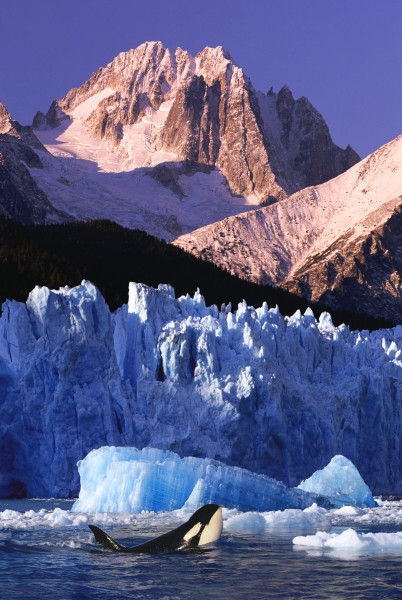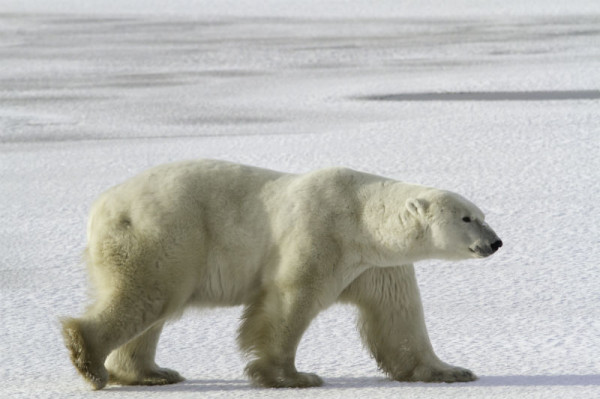Apex predators in the Arctic Ocean: can there only be one?
For thousands of years, polar bears have reigned as the top predator in the Arctic marine regions. For the most part, they were unchallenged, aside from a few massive walruses able to pierce an unlucky polar bear’s body with their powerful tusks. But as the Arctic summer periods of sea- ice-free conditions are getting steadily longer, a new predator has come to town: the killer whale.
Killer whales have frequented Arctic waters in the past, but sightings have increased steadily in recent years, as climate change causes the Arctic to melt at increasingly rapid rates. With slow-moving fat-rich marine mammals – like bowhead whales, belugas and narwhal – available in large numbers during the ice-free season, food is plentiful. These mammals are easy prey for the speedy and powerful killer whales.
Taking advantage of this opportunity, government scientists tracked five killer whales in the Canadian Arctic in August 2013, exploring where they feed and where and how far they travel o migration to previously unknown wintering areas.
As a top predator in ice-free waters around the world, the killer whale is now vying for apex predator status in the Arctic as well, primarily at the edge of the Arctic marine regions (although some venture as far north as Ellesmere Island, in the Last Ice Area). This raises some interesting questions: does it really matter ecologically if polar bears decline as the top predator and killer whales increase?
Let’s look at how they compare:
As climate change continues to melt Arctic sea ice, polar bears and killer whales will fare differently. Polar bears are losing the sea ice habitat for which they evolved, making it more challenging for them to live their lives as they have for thousands of years. With their highly specialized ecological and feeding niche, this is a real threat.
At the same time, climate change is opening up new opportunities for the killer whale in the Arctic. As the main open-water predator for most of the world’s oceans, they will likely do well in ice-free regions of the Arctic.
We don’t yet know what these changes to the Arctic will mean, or how they’ll impact species and people. What we do know is that, ultimately, less ice means fewer bears – which is why we’re working to ensure that the polar bears have a future home where sea ice remains resilient: the Last Ice Area.
Support our Arctic work today, and – through the Arctic Home campaign – Coca-Cola® will match your donation dollar-for-dollar until March 15, 2014, to a maximum of $1 million USD (Canada and U.S. only). Don’t miss this chance to double the impact of your gift, give today!




